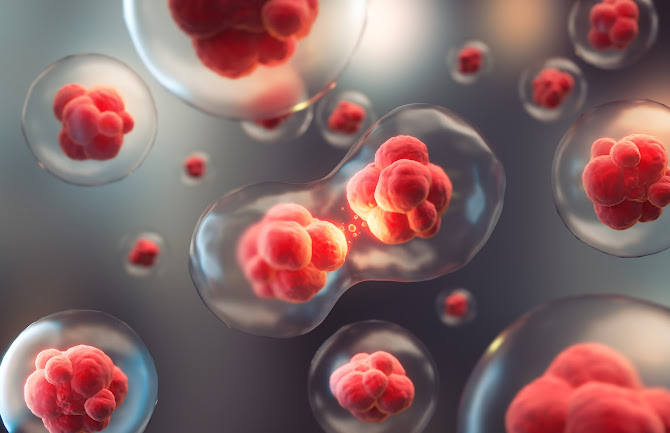Induced Pluripotent Stem Cells: Global Potential of Induced Pluripotent Stem Cell Therapies:
 |
| Global Induced Pluripotent Stem Cells |
Discovery and Progress So Far
Induced pluripotent stem cells (iPSCs) promise
hope for new treatments
In 2006, Japanese scientist Shinya Yamanaka made the breakthrough discovery
that adult cells could be reprogrammed back to an embryonic state by
introducing only four transcriptional factors. This finding allowed researchers
to create pluripotent stem cells directly from adult tissues without the use of
human embryos. Since their discovery, enormous progress has been made in
understanding how to derive and differentiate iPSCs into various cell types for
potential therapies.
Early Success in Animal Models
The potential of iPSCs was quickly demonstrated in animal studies. Some of the
earliest successes included using iPSC-derived dopaminergic neurons to treat
Parkinson's disease models and cardiomyocytes to repair damaged mouse hearts
after a heart attack. These proof-of-concept studies showed iPSCs could
potentially be used as a renewable source of cells to treat a wide range of
diseases. More recently, iPSC-derived retinal pigment epithelial cells have
restored vision in models of age-related macular degeneration. Such results
fueled enthusiasm for clinical translation of iPSC therapies.
Standardizing Protocols and Ensuring Safety
While the potential of iPSC therapies is great, significant challenges remained
in translating this technology to the clinic. Variability in Global
Induced Pluripotent Stem Cells production and differentiation between
labs needed to be addressed before clinical use. Strict protocols and controls
were required to ensure transplanted iPSC-derived cells did not form tumors or
cause immune reactions. Advances in genome editing helped address these safety
issues by reducing genetic and epigenetic changes induced during reprogramming.
With refinement of protocols, the first clinical trials using iPSCs began in
recent years.
Early Clinical Trials Demonstrate Safety and Promise
In 2014, researchers in Japan conducted the first-ever transplantation of
iPSC-derived retinal pigment epithelial cells to treat macular degeneration
patients. No serious adverse effects were observed during follow-up. This
initial safety study demonstrated the feasibility of iPSC therapies. Other
early clinical trials evaluated the safety of transplanting iPSC-derived cells
to treat heart failure, spinal cord injury, and Parkinson's disease. While
still early, results so far suggest iPSC therapies can be delivered safely.
Larger efficacy trials are underway. The success of these pioneering studies
helped establish clinical protocols and garner regulatory approval for
subsequent iPSC trials worldwide.
Global Efforts to Advance iPSC Therapies
Stem cell research organizations around the world are actively working to
accelerate the development of safe and effective iPSC-based treatments.
International consortiums have formed to share protocols, cell lines, and best
practices. Groups like the International Stem Cell Banking Initiative help
provide characterization standards and guidelines for stem cell production.
Government funding is supporting preclinical and clinical research. The United
States, European Union, Japan, South Korea, China, and others contribute
significantly to advancing this field. International collaboration maximizes
resources and ensures globally consistent safety standards. Regulatory bodies
work together to streamline approval pathways for new iPSC therapies. Through
these kinds of cooperative efforts, iPSC therapies are advancing rapidly toward
widespread clinical application.
Overcoming Challenges to Global Access
While scientific and technical hurdles continue to be addressed, ensuring
equitable global access to new iPSC treatments also needs focus. Significant
barriers currently inhibit access in developing nations and remote areas.
Issues like high therapy costs, infrastructure limitations, and medical
expertise shortages must be overcome. International organizations are starting
to tackle these challenges through capacity building, technology transfer, and
novel funding models. As iPSC therapies progress, developing ethical frameworks
for global distribution will also be important given limited initial supplies.
Through coordinated efforts, the goal is to make safe and effective
personalized regenerative medicines available worldwide, not just in wealthy
countries.
The Future is Bright
The discovery of induced pluripotent stem cells technology held the promise of
developing patient-specific cell therapies without ethical concerns.
Considerable progress has already been made in just over a decade. Early
clinical studies demonstrate their feasibility and safety. Global collaboration
is advancing science, sharing best practices, and working to address
infrastructure and access challenges in remote areas. With large, late-stage
trials ongoing, the future looks bright for translation of iPSC therapies. In
the years ahead, these regenerative medicines have the potential to
revolutionize treatment for many currently incurable diseases worldwide. If
challenges around efficacy, manufacturing, cost and equitable access can be
met, iPSCs may usher in a new era of personalized regenerative medicine with
applications across multiple therapeutic areas.


%20Treatment%20(1).jpg)
Comments
Post a Comment